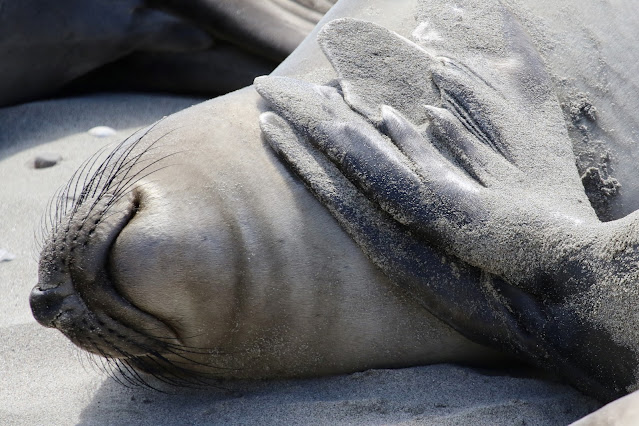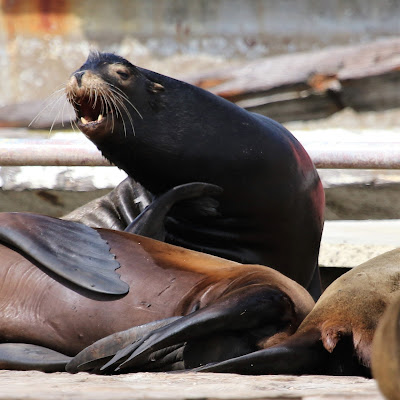It is just after dawn on a road through the dry forest that flanks the Pacific Ocean. Breakfast has been postponed so that we can catch the morning's first rush of bird activity. A White-throated Magpie Jay flaunts its tasselled crest, while a startling yellow Prothonotary Warbler shimmers through the foliage. Attuned to such small movements, it comes as a surprise when a large black object crashes through the bushes and pauses in a fork of branches to give you a hard stare. This is a Mantled Howler Monkey Alouatta palliata, the most conspicuous of Costa Rica's four primate species.
Howlers can turn up in forests all over Costa Rica, from the coast to mid-elevation rainforests (around 2,000 metres up). We first heard them at Pocosol Biological Station, a rainforest research facility at the end of a long and bumpy track through the foothills, where their soundtrack of hooting calls echoed over the forest canopy as dawn was breaking. But they didn't show themselves at Pocosol: our first distant sighting was of several black specks in trees across the Rio Frio down on the Nicaraguan border at Los Chiles a couple of days later, where the now-familiar Howler chorus accompanied the evening bustle of comings and goings on the town's busy waterfront.
After that, Howlers seemed to appear in every large forest that we visited. At Tirimbina Rainforest Reserve, in the foothills on the Caribbean side of Costa Rica's central mountain chain, a troop of Howlers passed through the canopy right above us, sending down one individual for a closer look (below). They were interested in us human visitors, without wanting to get too close; this may be a response to what they see as a possible predator, or it might be just exploiting the potential for a food handout. Certainly, Howlers are tolerant of some degree of human activity and can occupy more disturbed secondary forest habitats: we saw one near to our hotel entrance at Quinta de Sarapiqui for example.
 |
| Mantled Howler Monkey - Tirimbina, Costa Rica |
Howler Monkeys are found across the tropical forests of Central and South America where their diet comprises mostly young leaves of a variety of rainforst trees. This isn't the most nutritious of foods, but at least there's plenty of it, although the Howlers need to be careful to avoid eating leaves from the more toxic tree species. This leads to an ongoing evolutionary 'arms race' between hungry monkeys and ever-more sophisticated plant defence mechanisms.
From the six Howler Monkey species listed by Louise Emmons in 1997, we have jumped to 15 species that are now recognised by world conservation body the IUCN. Several of these newly defined species have very limited ranges, but Mantled Howlers can be found across much of tropical Central America and down the Pacific coast to southern Ecuador. Despite this large range, they are a conservation concern (classed as "vulnerable") as numbers have decreased by at least 30% over 30 years. Threats include hunting and habitat loss.
While Mantled Howler Monkeys may be the heaviest of Costa Rica's four primate species, they are not necessarily the biggest. What Central American Spider Monkeys Ateles geoffroyi (below) lack in bulk, they make up for in reach. These lanky, long-limbed canopy dwellers are well-named.
 |
| Central American Spider Monkey - Tirimbina, Costa Rica |
Tirimbina Rainforest Reserve (website), which should be on the itinerary of every naturalist visiting Costa Rica, provided our only encounter with this elusive species. Unlike the Howlers, they showed no interest in coming close, and we had to be content with glimpses through the thick forest foliage. The photograph above shows the light-coloured facial markings that distinguish them from the mostly-black Howlers, while the poor image below gives a better impression of their spider-like profile. Although most New World monkeys have prehensile tails that can grip round branches, Spider Monkeys seem particularly adept at using it as a fifth limb, making short work of the complex job of navigating through the tangled forest canopy. They moved with an effortless style.
 |
| Spider Monkey silhouette - Tirimbina, Costa Rica |
Unlike the leaf-eating Howlers, Spider Monkeys seek more nutritious forest foods such as fruits, seeds, flowers and even some small animals. These can be scarce resources, and as a result Spider Monkeys need to range across a large area of forest. This means that their territories are bigger, sometimes over 100 hectares, than those of the more sedentary Howlers which can manage in under 60 hectares. Mind you, Spider Monkeys tend to move around in bigger numbers than Mantled Howlers: groups can number up to 50 individuals, compared with 10-20 Howlers, although the our Spider Monkeys at Tirimbina were far fewer in number.
Sadly, the conservation picture for Central American Spider Monkeys is even worse than for the Mantled Howlers. The species has a somewhat limited range, being confined solely to Central America, following a taxonomic split that has separated them from a population in Colombia and western Ecuador now called Brown-headed Spider Monkeys Ateles fusciceps. These are also endangered. Central American Spider Monkeys have suffered an even greater population loss than the Howlers: a 50% reduction over 45 years. Habitat destruction is the main culprit, although hunting for bushmeat and the pet trade is also a concern.
While Costa Rica can boast an excellent network of protected forests, this doesn't mnean that the future of species like these two primates is secure. Conservation organisations working to safeguard such habitats, such as the World Land Trust which I have been supporting for over 20 years (and which operates on Costa Rica among many other locations), need all of the help that they can get.
Right - two primates down, and two to go. Watch this space.
 |
| Mantled Howler - Quinta de Sarapiqui, Costa Rica |
Sources
Cortes-Ortíz, L., Rosales-Meda, M., Williams-Guillén, K., Solano-Rojas, D., Méndez-Carvajal, P.G., de la Torre, S., Moscoso, P., Rodríguez, V., Palacios, E., Canales-Espinosa, D., Link, A., Guzman-Caro, D. & Cornejo, F.M. 2021. Alouatta palliata (amended version of 2020 assessment). The IUCN Red List of Threatened Species 2021: e.T39960A190425583. https://dx.doi.org/10.2305/IUCN.UK.2021-1.RLTS.T39960A190425583.en. Accessed on 02 February 2025.
Cortes-Ortíz, L., Solano-Rojas, D., Rosales-Meda, M., Williams-Guillén, K., Méndez-Carvajal, P.G., Marsh, L.K., Canales-Espinosa, D. & Mittermeier, R.A. 2021. Ateles geoffroyi (amended version of 2020 assessment). The IUCN Red List of Threatened Species 2021: e.T2279A191688782. https://dx.doi.org/10.2305/IUCN.UK.2021-1.RLTS.T2279A191688782.en. Accessed on 02 February 2025.
Emmons, L. H. (1997) Neotropical Rainforest Mammals: A Field Guide (2nd ed) Chicago: Chicago UP
Henderson, C.L. (2010) Mammals, Amphibians and Reptiles of Costa Rica. Austin: University of Texas Press.
%2022.10.24.JPG)



%2022.10.24.JPG)

%2022.10.24.JPG)








%20Deer%20Ani%20Nuevo%20SP%20CA%203.4.23.JPG)














%202.4.23.jpg)




.JPG)

.JPG)




















